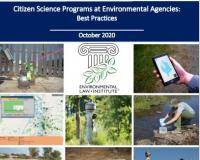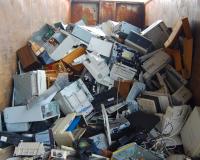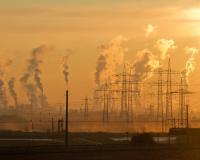
Vibrant Environment
Pollution Control
All | Biodiversity | Climate Change and Sustainability | Environmental Justice | Governance and Rule of Law | Land Use and Natural Resources | Oceans and Coasts | Pollution Control

Environmental agencies are increasingly transforming their approach to citizen science, from viewing it as a source of data primarily for education and awareness to a potential source of concrete value for their programs. Although this relationship has existed for some time, the emergence of new technologies, an increasingly aware public, and the rise of unexpected pollution events has reinvigorated the way agencies and the public work together.

As we are moving from an aggressively deregulatory period to one in which regulation is more likely to be seen as important in advancing environmental policy, let’s take a quick look at what to anticipate from the three branches of the federal government.

The first session of the International Network for Environmental Compliance and Enforcement (INECE) six-part citizen science webinar series explored the current and potential uses of citizen/community science initiatives to improve environmental monitoring, compliance, and enforcement around the world. Citizen science encompasses a broad range of activities, ranging from the use of low-cost hand-held air monitors by individuals to sophisticated, university-based monitoring networks and satellite monitoring plans by large environmental NGOs. These activities can raise awareness of environmental issues, inform agency actions including compliance and enforcement programs, and inform citizen litigation to stop polluting activities.

The fashion industry is thirsty. Every year, it consumes 93 billion cubic meters of water—enough for the survival of over 5 million people. The problems within the fashion industry go beyond water use. Due to the rise in fast fashion, global clothing production has exponentially increased, doubling between 2000 and 2014. Fashion is now the second-most polluting industry worldwide.

In May 2016, EPA issued a lifetime Health Advisory (HA) of 70 parts per trillion (0.07 ug/L) for the combination of two per- and polyfluoroalkyl substances (PFAS) chemicals, PFOS and PFOA, in drinking water. EPA’s HA is not enforceable or regulatory—it provides technical information to state agencies and other public health officials on health effects, analytical methodologies, and treatment technologies associated with drinking water contamination. In EPA’s subsequent 2019 PFAS Action Plan, EPA noted that over 4,000 PFAS may have been manufactured and used in a variety of industries around the world since they were first synthesized in the 1940s. Because PFAS are water soluble, over time PFAS from firefighting foam, manufacturing sites, landfills, spills, air deposition from factories and other releases can seep into surface soils and potentially percolate into groundwater, thus implicating drinking water sources.

Environmental Protection Agency chief Andrew Wheeler proudly details the administration’s deregulatory record in a Newsweek opinion article published in late July. He frames his success story within President Trump’s January 2017 executive order requiring agencies to eliminate two regulations for each new one. While Wheeler touts the avoided costs, he doesn’t mention the avoided benefits the repealed rules would have provided.

Among the dizzying array of commercials and advertisements we see every day, a new electronic product seems to join the lineup every other month. Almost like clockwork, for example, Apple releases its newest edition of the iPhone early in the fall. The company generates worldwide anticipation for the new model, with people frantically pre-ordering and lining up hours in advance to purchase a phone they only plan to use until the following year, when Apple will once again release a newer, sleeker generation of the iPhone.

Numerous studies have shown that Black and Latinx communities in the United States face higher hospitalization and mortality rates from COVID-19 and are disproportionately harmed by the virus. While many cite comorbidities and underlying health issues as the reasons for this disparity, the root of this problem is systemic racism. Recent research has found that social determinants like access to healthcare, employment, and clean air and water are the true inequities that have made COVID-19 deadliest for communities of color.

Though the remediation of Superfund and brownfield sites protects the environment by removing harmful contaminants, the cleanup process itself can produce a significant environmental footprint. Remediation often involves technologies and heavy-duty construction equipment that is powered by fossil fuels and emits air pollution. How can we reduce the environmental footprint of the remediation process at these contaminated sites?

In Part One of this blog, I discussed the negative impacts of per- and polyfluoroalkyl substances (PFAS) and the lack of regulation in the United States as compared to the European Union (EU). This second part proposes three policy options for the U.S. government to consider: (1) regulating the production of PFAS; (2) limiting the ingestion of PFAS through drinking water; and (3) providing funding for federal cleanup of PFAS-contaminated sites.